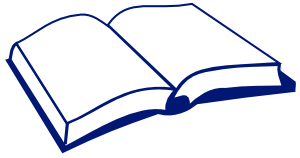

"Writing gives us power--the power to influence and change our world, the means to ameliorate friendships through written communication, the tool to understand our inner selves." (Bonnie M. Davis)
"For too many students, reading is just "eating" words with no time to savor them." (Bonnie M. Davis) Understanding our own level of readership is the key to motivating our students to read and incorporating more reading and writing into our subject areas. Too often, my students read just to cover the material. The demands of extra-curricular activities, homework and lack of organizational skills can all impact the quality time students spend reading. By taking time to analyze my own reading habits, I gain a better understanding of the reading patterns and challenges my students may be experiencing.
I am an avid reader. I choose books that cover my specific subject area, but have also been fortunate to have students who share their books with me. I know what books are on the best seller list and often read them myself - the TWILIGHT series - for example. My reading history reflects the strong emphasis I have put on reading. Growing up in a household of books and magazines, I was always reading from lots of different sources. My grandmother, who was Polish, would sit in her rocker chair and read the Polish newspaper each week. As a child, I would check out books from the library, read books found in boxes in the attic and devour the celebrity magazines my aunt would bring over. My mom would ask me to spell words as I was falling asleep (no kidding!) So, reading, writing and spelling have been a part of my life for well over fifty years and I am so glad to be able to say that.
A classroom where all student love to read is filled with artwork, quotations, collages and summaries about topics of interest to the students. I imagine classical music played in the background and over-sized comfy chairs in the corners of the classroom. I might simulate a classroom like that by providing a space where students who are finished with their assignment can go to read or give them a library pass to check out books or do research.
I know it is very important that students know how to effectively communicate in writing both formally and informally. I am a writer. I have a blog spot and regularly update Facebook. I communicate regularly using email and frequently use snail mail around the holidays. At school, I created our seventh grade newsletter including articles from our faculty team.
In a classroom where diverse learners read and write, I envision posters reflecting a student's cultural background on posters, essay, and pictures. I hear students reading selections in their native language. I see myself researching books and magazines that reflect the cultural diversity of my students. Bulletin boards would include words and phrases from many languages. I'd also like to invite speakers to the classroom to speak to students about their experiences learning about science. It is important to read aloud to the students. There are many writers like Isaac Asimov who have interesting novels and short stories that the students would be interested in reading aloud. By using a variety of techniques, we can easily incorporate enriching reading and writing projects to reach our diverse learners.
based upon the book HOW TO TEACH STUDENTS WHO DON'T LOOK LIKE YOU - Bonnie M. Davis
No comments:
Post a Comment